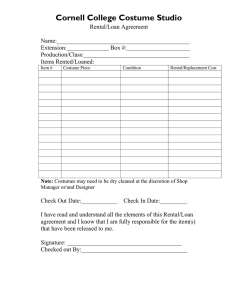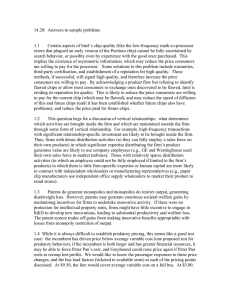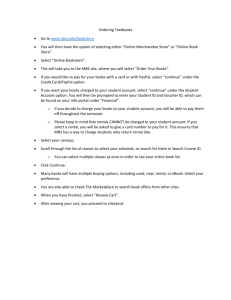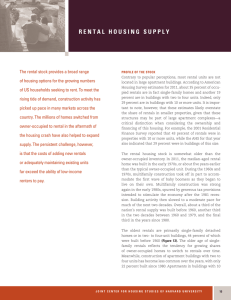Short Answer Problems 1.1
advertisement
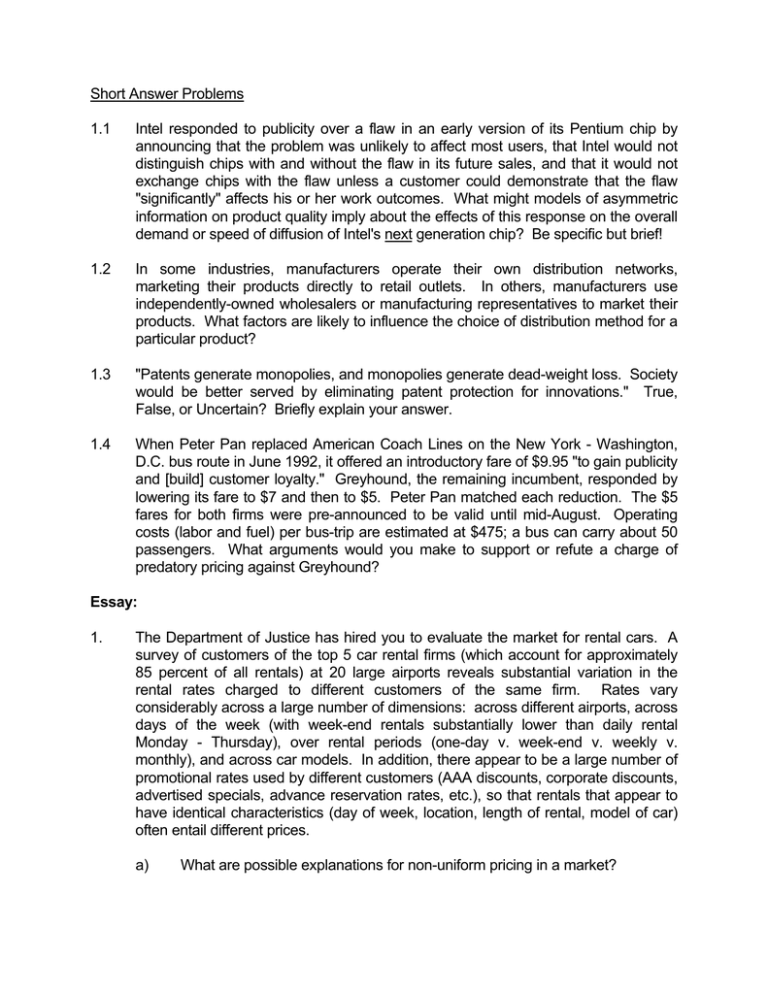
Short Answer Problems 1.1 Intel responded to publicity over a flaw in an early version of its Pentium chip by announcing that the problem was unlikely to affect most users, that Intel would not distinguish chips with and without the flaw in its future sales, and that it would not exchange chips with the flaw unless a customer could demonstrate that the flaw "significantly" affects his or her work outcomes. What might models of asymmetric information on product quality imply about the effects of this response on the overall demand or speed of diffusion of Intel's next generation chip? Be specific but brief! 1.2 In some industries, manufacturers operate their own distribution networks, marketing their products directly to retail outlets. In others, manufacturers use independently-owned wholesalers or manufacturing representatives to market their products. What factors are likely to influence the choice of distribution method for a particular product? 1.3 "Patents generate monopolies, and monopolies generate dead-weight loss. Society would be better served by eliminating patent protection for innovations." True, False, or Uncertain? Briefly explain your answer. 1.4 When Peter Pan replaced American Coach Lines on the New York - Washington, D.C. bus route in June 1992, it offered an introductory fare of $9.95 "to gain publicity and [build] customer loyalty." Greyhound, the remaining incumbent, responded by lowering its fare to $7 and then to $5. Peter Pan matched each reduction. The $5 fares for both firms were pre-announced to be valid until mid-August. Operating costs (labor and fuel) per bus-trip are estimated at $475; a bus can carry about 50 passengers. What arguments would you make to support or refute a charge of predatory pricing against Greyhound? Essay: 1. The Department of Justice has hired you to evaluate the market for rental cars. A survey of customers of the top 5 car rental firms (which account for approximately 85 percent of all rentals) at 20 large airports reveals substantial variation in the rental rates charged to different customers of the same firm. Rates vary considerably across a large number of dimensions: across different airports, across days of the week (with week-end rentals substantially lower than daily rental Monday - Thursday), over rental periods (one-day v. week-end v. weekly v. monthly), and across car models. In addition, there appear to be a large number of promotional rates used by different customers (AAA discounts, corporate discounts, advertised specials, advance reservation rates, etc.), so that rentals that appear to have identical characteristics (day of week, location, length of rental, model of car) often entail different prices. a) What are possible explanations for non-uniform pricing in a market? b) Assess the plausibility of each explanation in (a) for the pattern of pricing observed in the rental car market. Include in your assessment any preconditions that attach to each explanation and whether they are likely to be satisfied in this market. If you need additional information, describe what that information is and how it would affect your conclusion. Be specific but brief! Numeric problems: See the odd problems at the end of the Church and Ware chapters assigned on the reading list. Answers in the back of the text.

